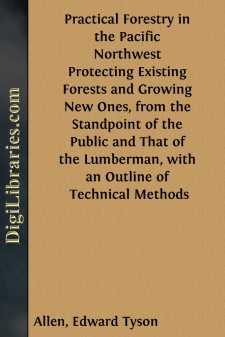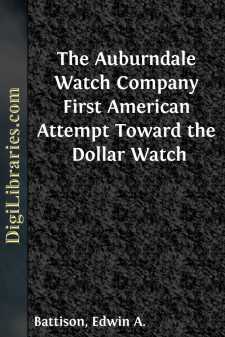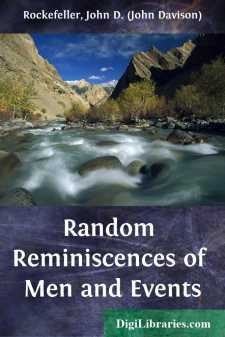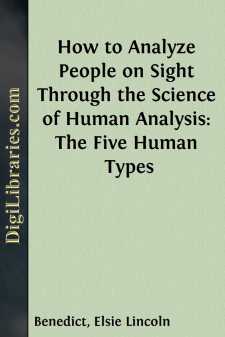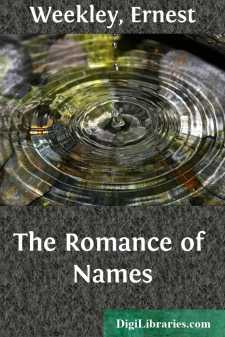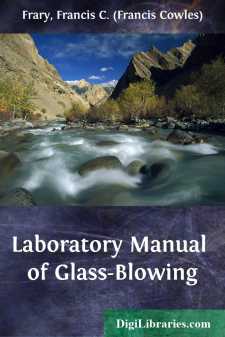Non-Classifiable
- Non-Classifiable 1768
Non-Classifiable Books
Sort by:
INTRODUCTION I. LIFE Thomas de Quincey was born in Manchester on the 15th of August, 1785. His father was a man of high character and great taste for literature as well as a successful man of business; he died, most unfortunately, when Thomas was quite young. Very soon after our author's birth the family removed to The Farm, and later to Greenhay, a larger country place near Manchester. In 1796 De...
more...
I. SOME CHARACTERISTICS OF MEDAEVAL THOUGHT IN the earliest days of his upward evolution man was satisfied with a very crude explanation of natural phenomena—that to which the name "animism" has been given. In this stage of mental development all the various forces of Nature are personified: the rushing torrent, the devastating fire, the wind rustling the forest leaves—in the mind of the...
more...
INTRODUCTION WHERE WE STAND TODAY WHAT WE HAVE The five states of Montana, Idaho, Washington, Oregon and California contain half the merchantable timber in the United States today—a fact of startling economic significance. It means first of all that here is an existing resource of incalculable local and national value. It means also that here lies the most promising field of production for all time....
more...
he idea of a machine-made watch with interchangeable parts had been in the minds of many men for a long time. Several attempts had been made to translate this conception into a reality. Success crowned the efforts of those working near Boston, Massachusetts, in the 1850’s. The work done there formed the basis on which American watch making grew to such a point that by the 1870’s watches of domestic...
more...
by:
Thomas Sherlock
The Relation I stand in to you, is a daily Call upon me to consider the spiritual State of these great Cities; and tho' I doubt not but God has many faithful and chosen Servants among you, yet the general View of the Wickedness and Corruption that abound, and are spreading far and wide, gives me, and must give to every serious Christian very painful Reflexions: It is hardly possible to think of...
more...
CHAPTER I Some Old Friends Since these Reminiscences are really what they profess to be, random and informal, I hope I may be pardoned for setting down so many small things. In looking back over my life, the impressions which come most vividly to my mind are mental pictures of my old associates. In speaking of these friends in this chapter, I would not have it thought that many others, of whom I have...
more...
by:
John Martin
CHAPTER 1 If you were asked, "What did Columbus discover in 1492?" you would have but one answer. But what he discovered on his second voyage is not quite so easy to say. He was looking for gold when he landed on the island of Hayti on that second trip. So his eyes were blind to the importance of a simple game which he saw being played with a ball that bounced by some half-naked Indian boys on...
more...
Human Analysis—The X-Ray Modern science has proved that the fundamental traits of every individual are indelibly stamped in the shape of his body, head, face and hands—an X-ray by which you can read the characteristics of any person on sight. he most essential thing in the world to any individual is to understand himself. The next is to understand the other fellow. For life is largely a problem of...
more...
by:
Ernest Weekley
CHAPTER I OF SURNAMES IN GENERAL "The French and we termed them Surnames, not because they are the names of the Sire, or the father,but because they are super-added to Christian names." (CAMDEN, Remains concerning Britain.) The study of the origin of family names is at the same time quite simple and very difficult. Its simplicity consists in the fact that surnames can only come into existence...
more...
Materials and Apparatus One of the most important factors in the success of any piece of glass-blowing is the glass employed. As is well known, there are two general varieties of glass: Lead glass and soda glass. Formerly much apparatus was made of lead glass, but at present it is very seldom met with, except in the little drops of special glass used to seal platinum wires into the larger sizes of...
more...




